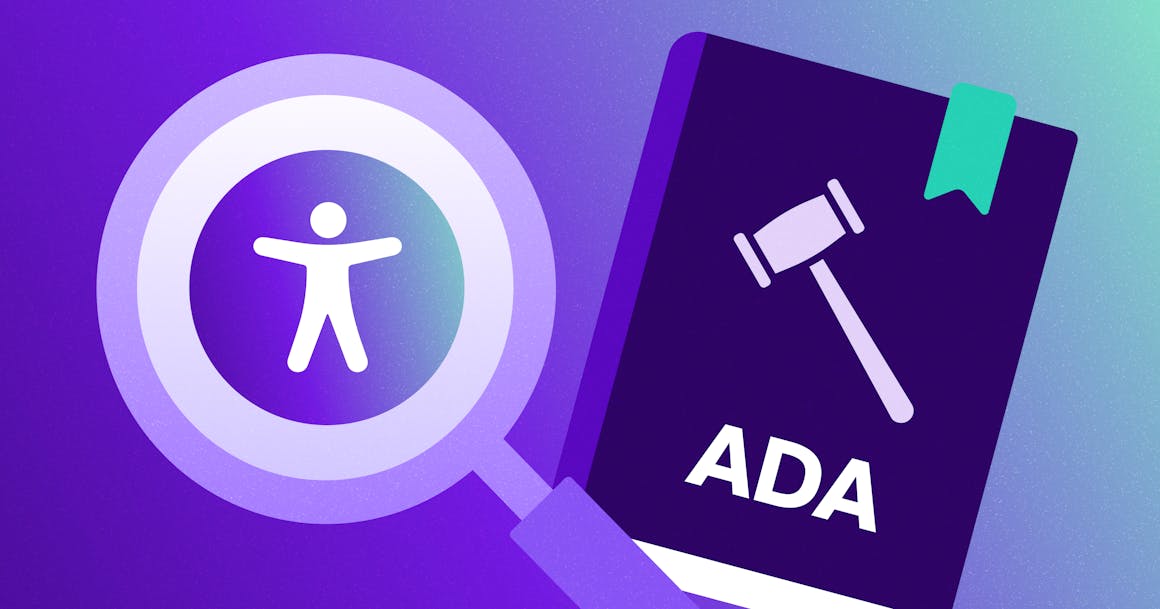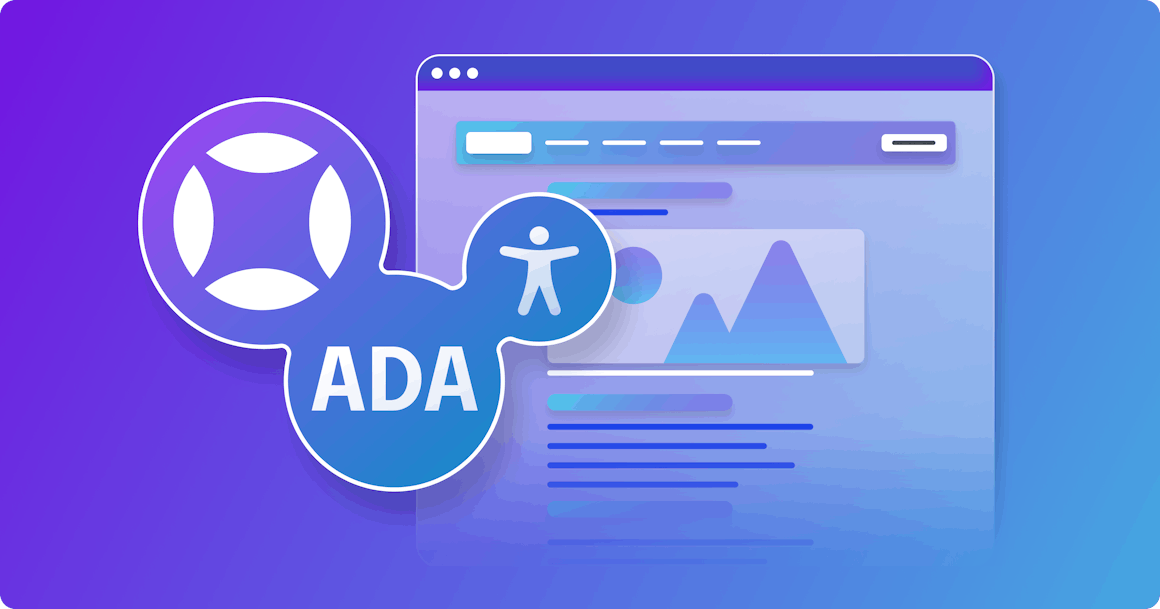ADA Audit 101: Is Your Website ADA Compliant?
ADA Audit 101: Is Your Website ADA Compliant?


Ready to see AudioEye in action?
Watch Demo
An ADA audit tests your content for compliance with common accessibility standards and identifies areas for improvement. Learn more about what an ADA audit is and why it’s important for accessibility.
The internet is our gateway to information, services, opportunities, and social connections. It’s become as necessary to our lives as electricity or water. However, without the proper accessibility measures in place, people with disabilities are excluded from this gateway.
The Americans with Disabilities Act (ADA) — enacted over three decades ago — was created to combat this, creating laws that prohibit discrimination against individuals with disabilities in both public and online spaces. Now, businesses must make their physical buildings and digital assets accessible or risk potential legal action.
Creating an ADA-compliant website may seem tricky and confusing — especially if you’re unfamiliar with accessibility standards and guidelines. The best place to get started: an ADA audit.
Below, we’ll delve into what an ADA audit is and how you can use the insights provided to enhance the accessibility of your website.
What is an ADA Audit?
Think of an ADA compliance audit as a checklist for your website. You can use it to determine whether or not your site complies with the ADA and other accessibility standards, including Section 508 of the Rehabilitation Act.
The process involves reviewing various aspects of your digital content, including its design, content, functionality, and user experience, against the Web Content Accessibility Guidelines (WCAG), which was created by the World Wide Web Consortium (W3C). The audit process will identify if your digital content isn’t meeting WCAG success criteria and provide recommendations for remediation.
Ultimately, the purpose of an ADA audit is to give you a starting point on where you can improve accessibility and inclusivity across your site.
Automated ADA Audit vs. Expert ADA Audit
You can perform an ADA audit on your site in two ways: an automated audit or an expert audit. Both aim to identify WCAG failures and accessibility issues; however, they have different approaches to identifying accessibility barriers.
Automated ADA Audit: What it Can Tell You
An automated ADA audit relies on software and automated tools to automatically scan and test for common accessibility issues in your digital content. The benefit of automated accessibility audits is they save you a significant amount of time and resources. They can also catch the most common accessibility issues, such as poor color contrast, missing alt text, and poor heading and label structure.
Automated accessibility testing is a great starting point for determining the overall accessibility of your website. However, automated tools alone are enough to ensure ADA compliance or ensure an accessible, smooth user experience. The approach needs to be supplemented with expert testing.
Expert ADA Audit: What They Can Do For Your Website
An expert audit is an audit performed by a team of accessibility experts who thoroughly test your site for more complex accessibility issues, including:
- Appropriate use of captions, transcripts, and subtitles.
- Good, descriptive alt text for images and other multimedia content.
- Input error detections and clear, prescriptive solutions on how to fix them.
- Compatibility with keyboards and assistive technologies, including screen readers.
The benefit of an expert audit is it provides real, detailed feedback about the user experience of disabled users. Additionally, some expert audits, like AudioEye’s, include suggestions for remediation, which can help streamline your path to accessibility.
However, expert audits can be time-consuming and resource-intensive. The solution: combine both automated testing and expert ADA audits. Automated ADA audits can be used to identify common accessibility issues, determine a starting point for remediation, and supplement the results from the automated audit with expert testing. This will enhance the overall accessibility of your site, improve the user experience, and get you closer to ADA compliance.

Benefits of Conducting an ADA Audit
Digital connectivity will only expand, which means businesses must ensure their digital content is accessible to all users. An ADA audit is the first step to enhancing accessibility and providing a seamless user experience for everyone. And that’s just one benefit of an ADA audit. Additional benefits include:
- Meeting ADA compliance requirements: An accessible website isn’t just good practice; it’s also a legal requirement. Conducting an ADA audit helps you to identify WCAG violations and resolve them before they result in legal action — which can be costly and damaging to your brand.
- Boosts brand reputation: Designing accessible digital content shows customers, partners, and the general public that you care about everyone. That boosts your brand image in a huge way and can open the door to a bigger audience.
- Increases SEO ranking: An ADA audit can be a secret weapon to improving your site’s SEO rankings. Making your site more accessible makes it easier for Google to crawl and understand your website. This can help to increase your overall rankings and help you appear higher in search results.
- Increases customer loyalty and satisfaction: People are more likely to remember brands that make an effort to be inclusive and accessible, which increases customer trust and loyalty. Plus, an accessible website is easier for all users, resulting in higher user satisfaction.
Most importantly, an ADA audit helps you to find and fix accessibility issues that decrease usability for individuals with disabilities. Making a genuine effort to create an accessible, inclusive experience for all users is the right thing to do.
Run a Free Accessibility Audit on Your Website
Running an ADA audit of your website is the first step towards increasing accessibility across your digital content. While the results from the audit may feel overwhelming, don’t forget they can be fixed. And you’re not alone.
AudioEye’s Website Accessibility Checker helps you take the first step toward an ADA-compliant website. Our scanner automatically scans your website for ADA compliance and enables you to meet WCAG guidelines, and our Automated Fixes apply automatic fixes for common accessibility errors. AudioEye’s team of experts further enhances accessibility by conducting Expert Audits to identify additional areas for improvement. With AudioEye, you’ll get closer to a more accessible, inclusive website that meets ADA and users’ requirements.
Ready to get started? Scan your website below or request a free trial.
Ready to see AudioEye in action?
Watch Demo
Ready to test your website for accessibility?
Share post
Topics:
Keep Reading

What’s New in WCAG 2.2: Changes and Updates from WCAG 2.1
Meeting WCAG 2.1 requirements doesn’t mean you conform to WCAG 2.2. Find out what’s changed and how to adapt your site or app.
compliance
April 07, 2025

ADA Demand Letter: What It Means & What to Do If You Get One
ADA demand letters are becoming more common. Understand what they are, how to respond, and how to reduce your legal risk moving forward.
compliance
March 28, 2025

Why an Accessibility Widget for Your Website Isn’t Enough — and What to Do Instead
Widgets seem like an easy way to ensure compliance with accessibility regulations, but your site/app needs more than they offer. Here’s how to approach it.
accessibility
compliance
March 25, 2025
